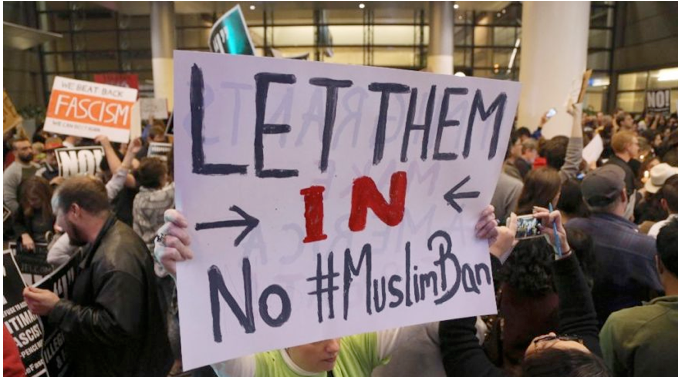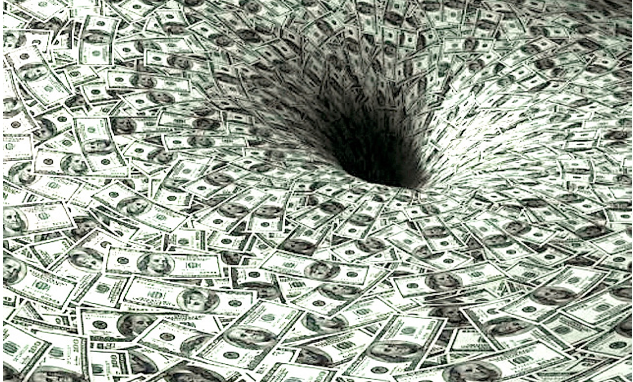‘Alternative Facts’ are Nothing New for Angelenos
WISHFUL THINKING ABOUNDS-Thank you Kellyanne Conway. Now we have a name for the phenomenon, Alternative Facts. We needed a simple term to encompass the lies, deceit, misinformation, disinformation, “fair and balanced untruths,” the fake news, the fatally flawed data, and the wishful thinking that have been plaguing us for years.
When his eminence President Donald Trump tweets about fake news, he too may have a point. The Left loves fake news. The media loves fake news. The Los Angeles Times has perfected Fake News by Omission. That’s why I stuck the LA Times with the motto: “All the News the Elite Wants You to See.” The media can fake the news by using misleading headlines and by omitting crucial facts. The most notorious example is, “Hands Up, Don’t Shoot.” As we now know, Michael Brown was not standing with his hands up surrendering when shot.
President Trump’s greatest contribution to our understanding of Alternative Facts is his ability to “perchance” Tweet From the Hip. I imagine some of his advisers have pasted signs on the walls of the West Wing urging, “THINK before your TWEET.” If that is so, the signs have been ineffective. While Trump presents a clear and present danger to the Union, we should realize that he did not invent the use of Alternative Facts. We are all in this current nightmare because Alternative Facts have become as American as apple pie.
Propaganda vs. Love of Truth
Many decades ago in the build-up to World War II, Alternative Facts ran rampant in the world. Europe had the Nazi Party, but American had its Lindberghs and the American Bund Movement. America also had a couple of Jewish kids, Jerry Siegel and artist Joe Shuster, high school students from Cleveland, who created Superman in 1933. Interestingly, Superman’s alter ego, Clark Kent, was a nerdy guy who worked for a newspaper, The Daily Planet – a rather universal sounding name.
Although Superman’s powers were allegedly involved with leaping tall buildings in single bound, etc., in reality his greatest super power was his belief in “Truth, Justice and the American Way.”
Somewhere after WW II, our belief in “Truth Justice and the American Way” waned somewhat. Instead, Alternative Facts came into favor with doctors telling Americans that smoking cigarettes was good for their health and the government warning us that smoking a single reefer would make you commit suicide.
Yet, we Americans had our limits in those yesteryears, as was shown on June 9, 1954, when chief counsel for the United States Army Joseph Welsh brought the McCarthy Era to an end by asking the Republican Senator from Wisconsin, “Have you no sense of decency, sir, at long last? Have you left no sense of decency?” In the 1950's, Truth, Justice and the American Way was not yet a dead.
Are Truth, Justice and the American Way, a Thing of the Past?
With Donald Trump’s cleansing of Jews and Genocide from the Holocaust Remembrance Day, with his claims that Mexicans are rapists and drug lords, and with the banning of Muslims from certain nations while expressly exempting Christians from the ban, Americans are drowning in a tsunami of Alt-Rightism that is emanating from the White House. There is a constant barrage of Alternative Facts about millions of illegals voting for Hillary Clinton, along with Trump’s cropped photo of his inauguration he showed to David Muir on ABC. It clouds our minds to the reality that Trump did not make America safe for Alternative Facts. That happened long ago.
We have become aware of Alternative Facts not because Trump has brought us something new. We are only shocked by the brazen absurdities of his Alternative Facts. Thus, we all need to stop and look at ourselves; we must remember Pogo who pointed out that we have found the enemy and he is us. Let me tweak that -- we have found the enemy and the enemy is our acceptance of Alternative Facts.
Alternative Facts Govern Los Angeles
In January 2014, Judge Alan Goodman warned Angelenos that the City intentionally used Alternative Facts to mislead the public and subvert the law. Judge Goodman’s exact words were, “fatally flawed facts,” “wishful thinking.” The judge said, “…material [facts] are necessary to informed decision-making and informed public participation.” As a result of then Councilmember Eric Garcetti’s habitual use of Alternative Facts, Judge Goodman rejected the Hollywood Community Plan.
In its aftermath, Mayor Garcetti has repeatedly said how important community plans are for the city. Yet, more than three years have passed and there is no new draft of the Hollywood Community Plan. In April 2016, Mayor Garcetti released a foreshadowing of that Community Plan. It was intentionally based on fatally flawed data claiming that Hollywood’s population had grown from 198,288 people in 2010 to 206,000 people in 2016. He cited something called the SCAG 2012 RPT as the source for this “fact.” That SCAG document had absolutely no – nada, zilch -- population data for Hollywood. Lies, deceit, fake news, Alternative Facts are falsehoods are that are found everywhere, too numerous to mention.
Does Garcetti’s perennial use of Alternative Facts matter? He has used them to divert over $2.5 billion to his developer buddies and he is proposing several mega-projects in Hollywood based on his lies about Hollywood’s population.
What did the 15-member Los Angeles City Council do when they were asked to approve the Hollywood Community Plan based on lies? During a council hearing on June 19, 2012, one councilmember asked whether City Planning could redo the Plan with accurate data. Senior Planner Kevin Keller basically said, “Yes, that is possible.” Whereupon Garcetti insisted that his Hollywood Community Plan, which everyone knew was based on falsified data, be approved. The LA City Council then unanimously approved it.
Alternative Facts that the entire City Council knew were false, ended up carrying the day. The Los Angeles City Council is often faced with projects based on Alternative Facts and each and every project is unanimously approved.
While Mayor Garcetti and Donald Trump are habitual users of Alternative Facts, does this pollute America? Or is using them something akin to a used car salesman’s saying, “This car was used only by a little old lady who only drove it to church on Sunday.”
The New Yorker ran an article in its January 30, 2017 issue called “Doomsday Prep for the Super-Rich” in which Evan Osnos noted:
“Even financiers who supported Trump for President, hoping that he would cut taxes and regulations, have been unnerved at the ways his insurgent campaign seems to have hastened a collapse of respect for established institutions. Dugger said, "The media is under attack now. They wonder, is the court system next? Do we go from 'fake news' to 'fake evidence'? For people whose existence depends on enforceable contracts, this is life or death."
The New Yorker, Mr. Osnos, and financiers are woefully behind the curve. Back in 1992, the California Supreme Court ruled that the court must enforce decisions where errors of fact and law are apparent on the face of the award and where they cause substantial injustice. See Moncharsh v. Heily & Blase, (1992) 3 Cal. 4th 1, 27-28. In her dissenting opinion, Justice Kennard noted, “the majority's holding requires our trial courts not only to tolerate substantial injustice, but to become its active agent.” Yes, the California Supreme Court requires its lower courts to treat known Alternative Facts as true!
The California Supreme Court ruled that some things are more important than Truth, Justice and the American Way, and winning is one of those things. The threat facing America does not come from Donald Trump, from Breitbart, from the corrupt Los Angeles City Council, or from judges who find facts and fiction to be fungible commodities. The threat comes from our acceptance of those lies, deceit, fake news, dishonest judges, dishonest media, lying Presidents, and prevaricators calling themselves Members of Congress while knowing that they are bold faced liars.
After the world economic crash in 2008, the nation accepted the Alternative Fact that certain Wall Street executives took unwise risks. That’s a “liar, liar, pants on fire” type of Alternative Fact. The economy crashed due to intentional multi-trillion dollar frauds perpetrated by Wall Street executives, none of whom went the prison. Why? Because we believed the in the Alternative Realty that criminality was mere carelessness.
Our nation seems to run on Alternative Facts. The use of perjury to convict people is so common that in January 2015, the federal courts said that the California courts had an “epidemic of misconduct” after a prosecutor took the stand and committed perjury in order to convict a defendant. Did U.S. Senator Kamala Harris, who was then California’s Attorney General, do anything about that perjury? No. She just took the credit for another successful prosecution.
As bad as Donald Trump may be, we the American people have created the swamp where Alternative Facts create Alternative Realities. The difference among Trump’s lying Alternative Facts, the court’s lying facts, the media’s lying facts, and Eric Garcetti’s lying Alternative Facts is basically nothing. A lie is a lie is a lie. The fault rests not in the stars nor even in the politicos but in ourselves for pretending that falsehoods are part of Truth, Justice and the American Way.
(Richard Lee Abrams is a Los Angeles attorney. He can be reached at: [email protected]. Abrams views are his own and do not necessarily reflect the views of CityWatch.) Edited for CityWatch by Linda Abrams.






 And that, you see, is where that big difference between 1968 and 2017 became apparent. Blocking a street or an intersection in 1968 was a whole different affair. An earlier generation remembers the police reading out the words, "This is an unlawful assembly." There was an official script that was colloquially referred to as "reading the riot act." Failure to disperse led to the police firing tear gas and, often enough, moving forward with clubs against the crowds.
And that, you see, is where that big difference between 1968 and 2017 became apparent. Blocking a street or an intersection in 1968 was a whole different affair. An earlier generation remembers the police reading out the words, "This is an unlawful assembly." There was an official script that was colloquially referred to as "reading the riot act." Failure to disperse led to the police firing tear gas and, often enough, moving forward with clubs against the crowds. 









 Said one participant, echoed by many, backed by so much pink: “There was an incredible politeness from the majority of the protesters. People were so close and I had never had so many boobs bump into me but everyone was saying ‘sorry’ and ‘excuse me.’ It was amazing! There was a variety of people there from old to young and of all races. The women who spoke were amazing. Janet Hahn was great and I think made us proud to be Angelenos.”
Said one participant, echoed by many, backed by so much pink: “There was an incredible politeness from the majority of the protesters. People were so close and I had never had so many boobs bump into me but everyone was saying ‘sorry’ and ‘excuse me.’ It was amazing! There was a variety of people there from old to young and of all races. The women who spoke were amazing. Janet Hahn was great and I think made us proud to be Angelenos.” 
 In 2008 a local developer won a referendum by 129 votes which granted a controversial building entitlement. The developer spent millions of dollars prior to the election with all manner of expensive propaganda. The grass-roots group opposing the developer’s plans suspected that many voters who had voted in Beverly Hills were not bona fide or legal residents of the City, but nonetheless voted in the election.
In 2008 a local developer won a referendum by 129 votes which granted a controversial building entitlement. The developer spent millions of dollars prior to the election with all manner of expensive propaganda. The grass-roots group opposing the developer’s plans suspected that many voters who had voted in Beverly Hills were not bona fide or legal residents of the City, but nonetheless voted in the election.




















